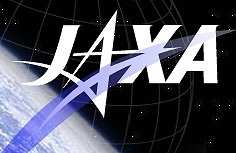Meeting In Japan Attended By Senior Representatives Of Ten
Agencies
Senior managers representing 10 space agencies from around the
world met in Kyoto, Japan Tuesday to advance the Global Exploration
Roadmap for coordinated space exploration. During the past year,
the International Space Exploration Coordination Group (ISECG) has
developed a long-range human exploration strategy. It begins with
the International Space Station and expands human presence
throughout the solar system, leading ultimately to human missions
to explore the surface of Mars. The roadmap flows from this
strategy and identifies two potential pathways: "Asteroid Next" and
"Moon Next."

Each pathway represents a mission scenario over a 25-year period
describing a logical sequence of robotic and human missions. Both
pathways were deemed practical approaches addressing common
high-level exploration goals developed by the participating
agencies, recognizing that individual preferences among
participating space agencies may vary regarding these pathways.
The first iteration of the roadmap will inform and focus the
planning currently underway in each of the partner agencies in the
areas of planetary robotic exploration, advanced technology
development and use of the space station in preparation for
exploration. It was agreed that during the next few weeks, this
initial version of the Global Exploration Roadmap would be
finalized and released to the public.

Yoshiyuki Hasagawa of Japan's Aerospace Exploration Agency, in
his capacity as chairman of the International Space Exploration
Coordination Group said, "We are very happy with the progress of
the Global Exploration Roadmap to technically coordinate both near
and long term space exploration planning, with world space
agencies."
During the meeting, the senior agency managers also reaffirmed
the role of the ISECG to facilitate the ability of space agencies
to take concrete steps toward partnerships that reflect a globally
coordinated exploration effort. "NASA is confident that the release
of this product, and subsequent refinements as circumstances within
each space agency evolve, will facilitate the ability of space
agencies to form the partnerships that will ensure robust and
sustainable human exploration," said NASA's Associate Administrator
for Human Exploration and Operations and outgoing ISECG chair
William Gerstenmaier.

The ISECG was established as a voluntary, non-binding
international coordination forum, where the partner agencies that
contributed to the Global Exploration Strategy (GES) can exchange
information regarding interests, plans, and activities in space
exploration. The GES set forth a shared vision for concerted human
and robotic space exploration missions focused on solar system
destinations where humans may one day live and work. Another stated
goal is to encourage the partners to work together on strengthening
both individual exploration programs and collective efforts. The
development of the Global Exploration Roadmap is the second step
toward achieving this goal, following the development of the ISECG
Reference Architecture for Human Lunar Exploration.
The countries participating in the meeting included in
alphabetical order: Canada, Europe, France, Germany, Italy, Japan,
the Republic of Korea, Russia, United Kingdom, and United
States.
 Aero-News: Quote of the Day (12.18.25)
Aero-News: Quote of the Day (12.18.25) Classic Aero-TV: Viking Twin Otter 400--Bringing the DHC-6 Back Into Production
Classic Aero-TV: Viking Twin Otter 400--Bringing the DHC-6 Back Into Production NTSB Final Report: Rans Employee Flying Club Rans S-6ES Coyote II
NTSB Final Report: Rans Employee Flying Club Rans S-6ES Coyote II ANN FAQ: Submit a News Story!
ANN FAQ: Submit a News Story! ANN's Daily Aero-Term (12.18.25): Braking Action Advisories
ANN's Daily Aero-Term (12.18.25): Braking Action Advisories





